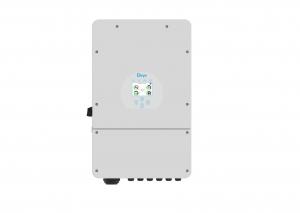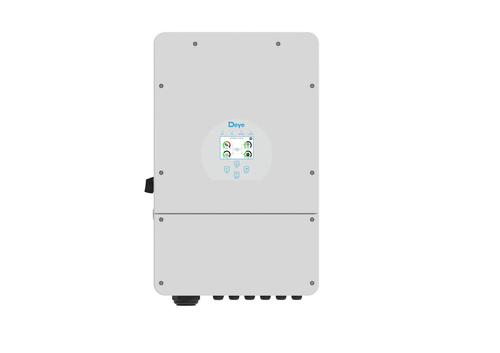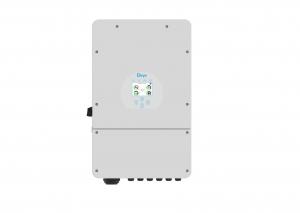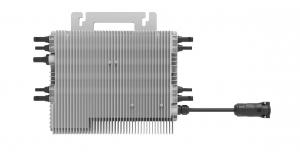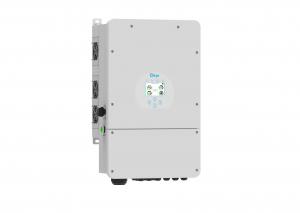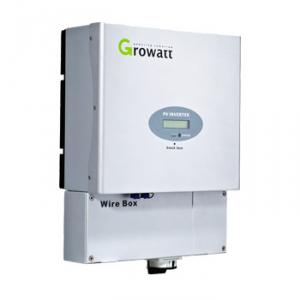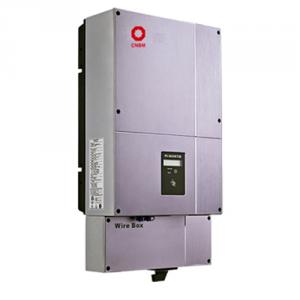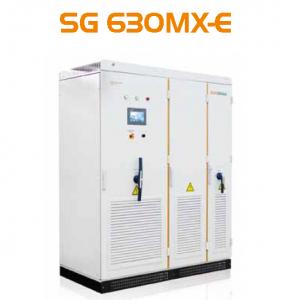SUN-10K-SG02LP2-US-AM3 deye inverters with US certificates from Panama's warehouse
- Loading Port:
- China main port
- Payment Terms:
- TT OR LC
- Min Order Qty:
- 50 pc
- Supply Capability:
- 5000 pc/month
OKorder Service Pledge
Quality Product, Order Online Tracking, Timely Delivery
OKorder Financial Service
Credit Rating, Credit Services, Credit Purchasing
You Might Also Like
Specification
Output Power:
13000
Inveter Efficiency:
97.6%
Output Voltage(V):
40-60V
Input Voltage(V):
370V
Output Current(A):
220
Output Frequency:
60/55-65
No. of MPP Trackers/ No. of Strings MPP Tracker:
3/2+2+2
Grid Connection Form:
2L+N+PE
Rated AC Input/Output Active Power (W):
10000
Specification:
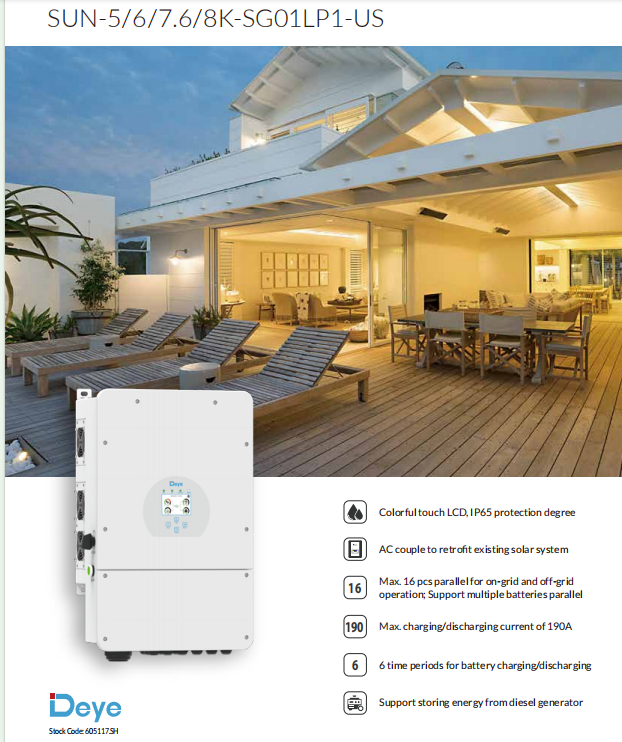
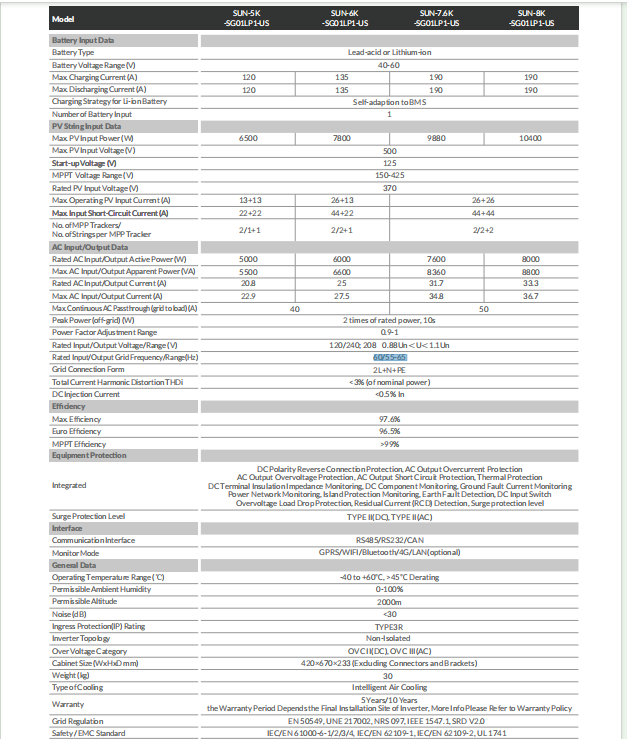
Application:

Company:
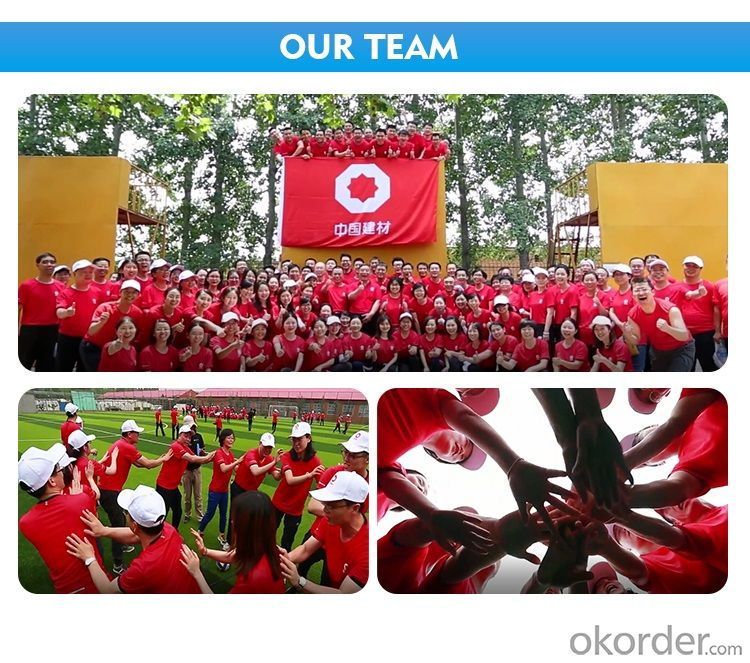
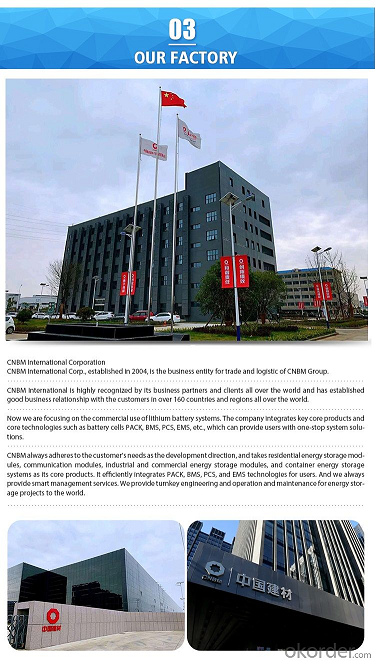
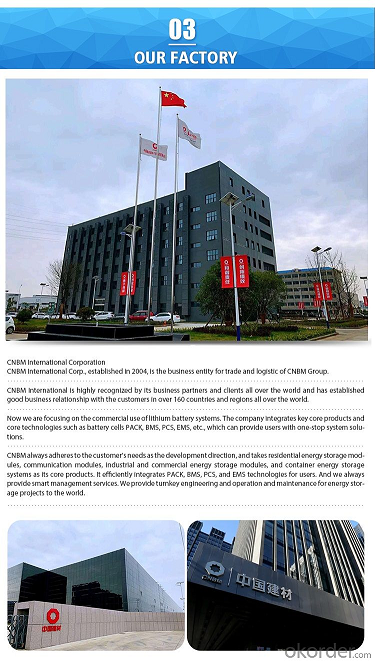
RFQ:
1.Are these products all from deye factory ?
Yes
2.Is this CNBM's Panama overseas warehouse
Yes
3.Are these goods from the bonded warehouse in Panama?
Yes
- Q: What are the installation requirements for a solar inverter?
- The installation requirements for a solar inverter typically include a suitable mounting location, adequate ventilation, and a compatible electrical system. It should be installed in an area with good sunlight exposure and away from any shading or obstructions. The inverter should be mounted securely on a sturdy surface, preferably indoors or in a weatherproof enclosure. Proper grounding and electrical connections are also necessary to ensure safe and efficient operation. It is essential to follow the manufacturer's guidelines and local electrical codes during installation.
- Q: How does a solar inverter impact the payback period of a solar system?
- A solar inverter can have a significant impact on the payback period of a solar system. The efficiency and reliability of a solar inverter can affect the overall energy production and performance of the solar system. A high-quality inverter can optimize the conversion of solar energy into usable electricity, maximizing the system's output and reducing energy losses. This improved efficiency can shorten the payback period by increasing the amount of electricity generated and therefore the savings on utility bills. Additionally, a reliable inverter can minimize maintenance and replacement costs, further enhancing the financial returns of the solar investment.
- Q: What is the expected lifespan of a solar inverter?
- The expected lifespan of a solar inverter typically ranges between 10 to 20 years.
- Q: Can a solar inverter be upgraded or expanded in the future?
- Yes, a solar inverter can be upgraded or expanded in the future. Upgrading or expanding a solar inverter typically involves adding additional capacity or features to the existing system. This can be done by adding more panels, batteries, or upgrading the inverter itself to accommodate increased power output. However, it is important to ensure compatibility and consult with a professional to assess the feasibility and requirements of any upgrades or expansions.
- Q: What are the potential risks of over-discharging a battery connected to a solar inverter?
- The potential risks of over-discharging a battery connected to a solar inverter include reduced battery lifespan, decreased battery performance, and potential damage to the battery cells. Over-discharging can lead to deep cycling, causing the battery to degrade faster and lose its capacity to hold a charge effectively. This can result in shorter backup power duration during periods of low solar generation. Additionally, excessive discharge can cause irreversible damage to the battery cells, leading to reduced overall battery performance and potential safety hazards.
- Q: How does a solar inverter handle grid faults and disturbances?
- A solar inverter is designed to handle grid faults and disturbances by continuously monitoring the grid conditions. In the event of a fault or disturbance, such as a voltage or frequency fluctuation, the solar inverter will quickly disconnect from the grid to ensure the safety of the system. Once the fault is resolved and the grid conditions stabilize, the solar inverter will reconnect to the grid and resume normal operation, ensuring a reliable and stable power supply.
- Q: What is the role of a solar inverter in reactive power compensation during grid disturbances?
- The role of a solar inverter in reactive power compensation during grid disturbances is to regulate and manage the reactive power flow between the solar panel system and the grid. During grid disturbances, such as voltage fluctuations or power factor variations, the solar inverter helps maintain a stable and balanced flow of reactive power, ensuring efficient and reliable operation of the solar panel system while minimizing the impact on the grid.
- Q: Can a solar inverter be used with a solar-powered refrigerator?
- Yes, a solar inverter can be used with a solar-powered refrigerator. The solar inverter is responsible for converting the direct current (DC) electricity generated by the solar panels into alternating current (AC) electricity, which is required to power the refrigerator. By using a solar inverter, the solar-powered refrigerator can operate efficiently and effectively by utilizing the solar energy collected from the panels.
- Q: How does the power factor correction affect the performance of a solar inverter?
- Power factor correction can greatly improve the performance of a solar inverter by ensuring that the power drawn from the grid is utilized efficiently. By correcting the power factor, the inverter reduces the reactive power component and increases the power factor closer to unity. This reduction in reactive power results in a more efficient utilization of the available power, leading to increased energy conversion efficiency and reduced losses in the inverter. Additionally, power factor correction helps in complying with grid regulations and prevents penalties or restrictions imposed by utility companies.
- Q: Can a solar inverter be used with a solar-powered data center?
- Yes, a solar inverter can be used with a solar-powered data center. A solar inverter is an essential component that converts the direct current (DC) generated by solar panels into usable alternating current (AC) electricity for powering electrical devices and systems, including data centers. By using a solar inverter, a solar-powered data center can efficiently utilize the renewable energy generated by solar panels to meet its power requirements.
Send your message to us
SUN-10K-SG02LP2-US-AM3 deye inverters with US certificates from Panama's warehouse
- Loading Port:
- China main port
- Payment Terms:
- TT OR LC
- Min Order Qty:
- 50 pc
- Supply Capability:
- 5000 pc/month
OKorder Service Pledge
Quality Product, Order Online Tracking, Timely Delivery
OKorder Financial Service
Credit Rating, Credit Services, Credit Purchasing
Similar products
Hot products
Hot Searches
Related keywords
